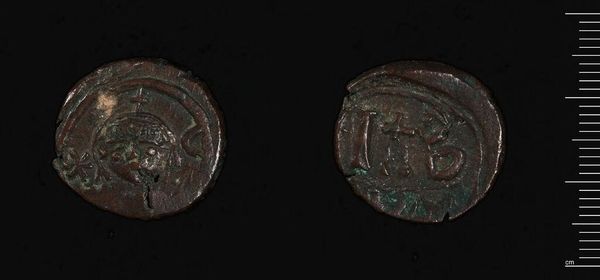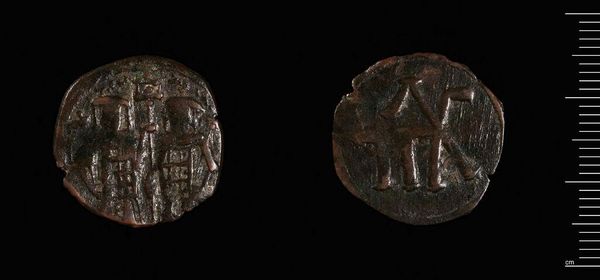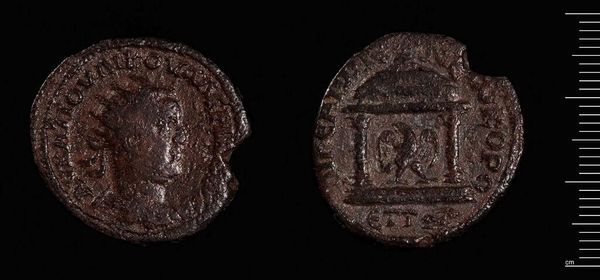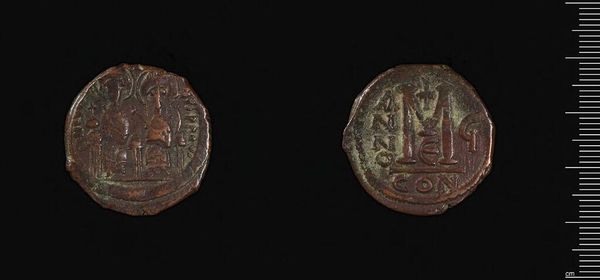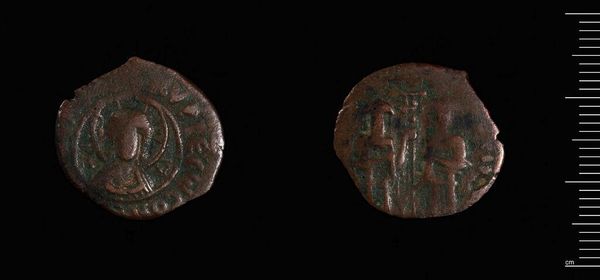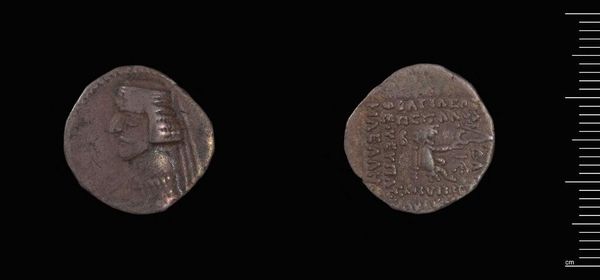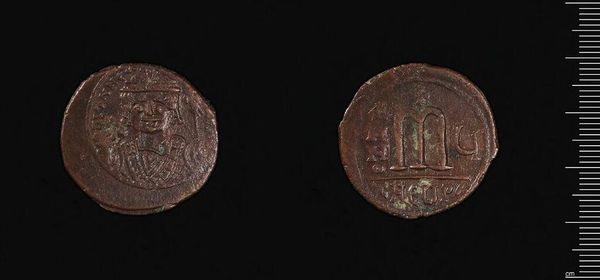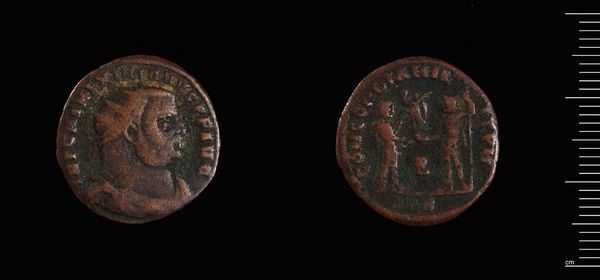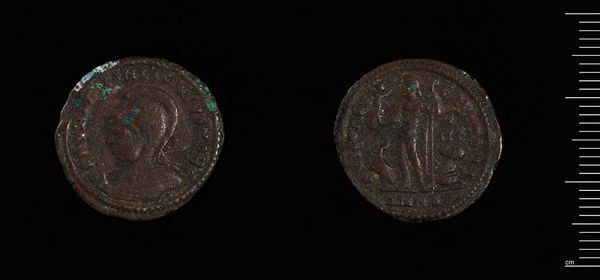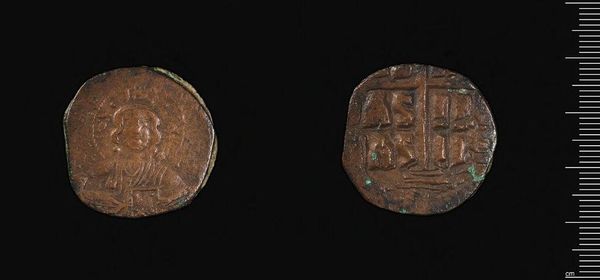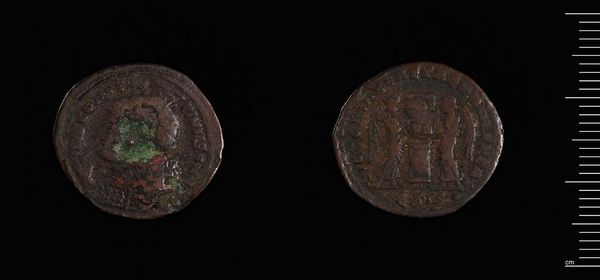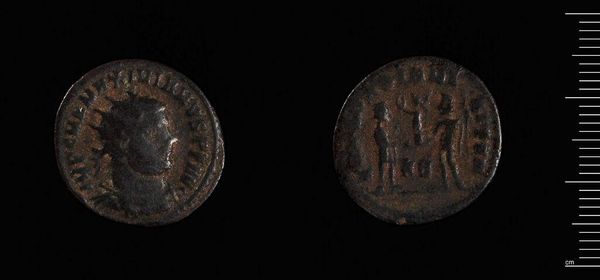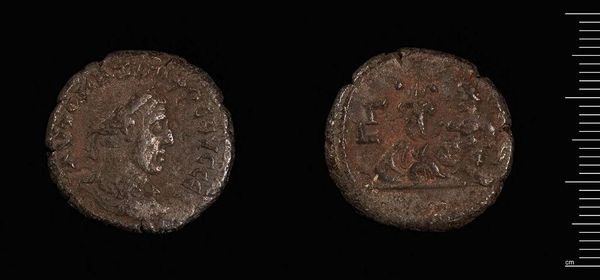
Dimensions: 6.02 g
Copyright: CC0 1.0
Curator: This is a Follis of Maxentius, a bronze coin from the early 4th century, now residing at the Harvard Art Museums. It weighs just over 6 grams. Editor: Immediately, I notice its worn texture – the surfaces seem abraded, carrying a sense of history. It makes me think about empires and the fleeting nature of power. Curator: One side features a portrait of Maxentius, the Roman emperor, his profile facing right. The reverse shows a temple, likely dedicated to a Roman deity, perhaps Roma herself. Editor: These images are strategic—they are not just symbolic. The portrait legitimizes his rule, while the temple connects him to traditional Roman values and divine favor. Curator: Indeed, coins like these were powerful tools for propaganda and communication. They visually reinforced the emperor’s image and the empire's ideology. Editor: And beyond its intended purpose, it is an enduring object from a tumultuous period, silently witnessing the rise and fall of an empire. Curator: A small object carrying immense cultural weight. Editor: Absolutely, a poignant reminder of history's layered meanings.
Comments
No comments
Be the first to comment and join the conversation on the ultimate creative platform.
